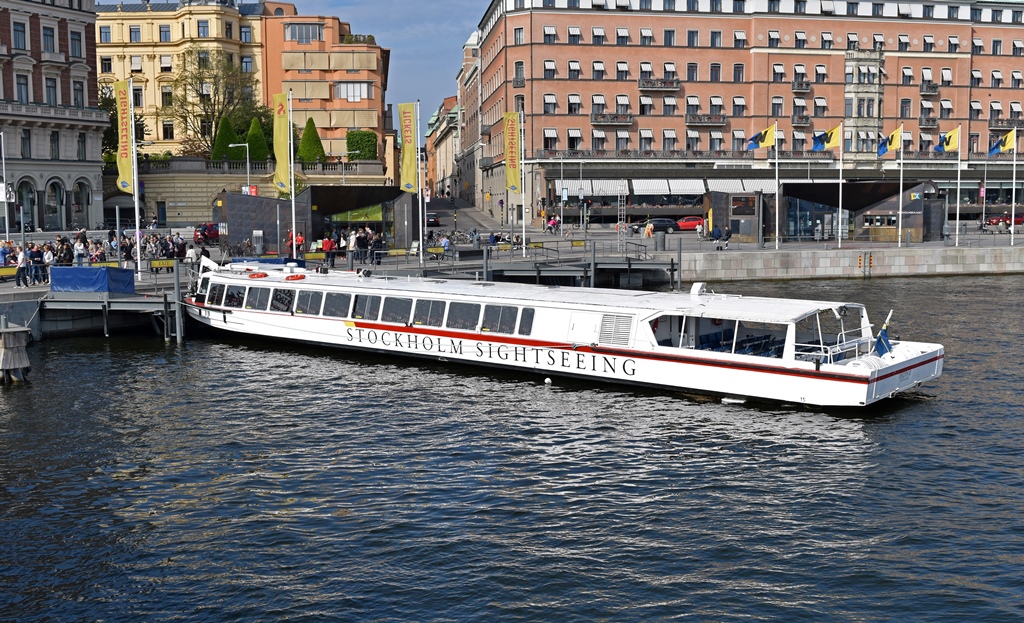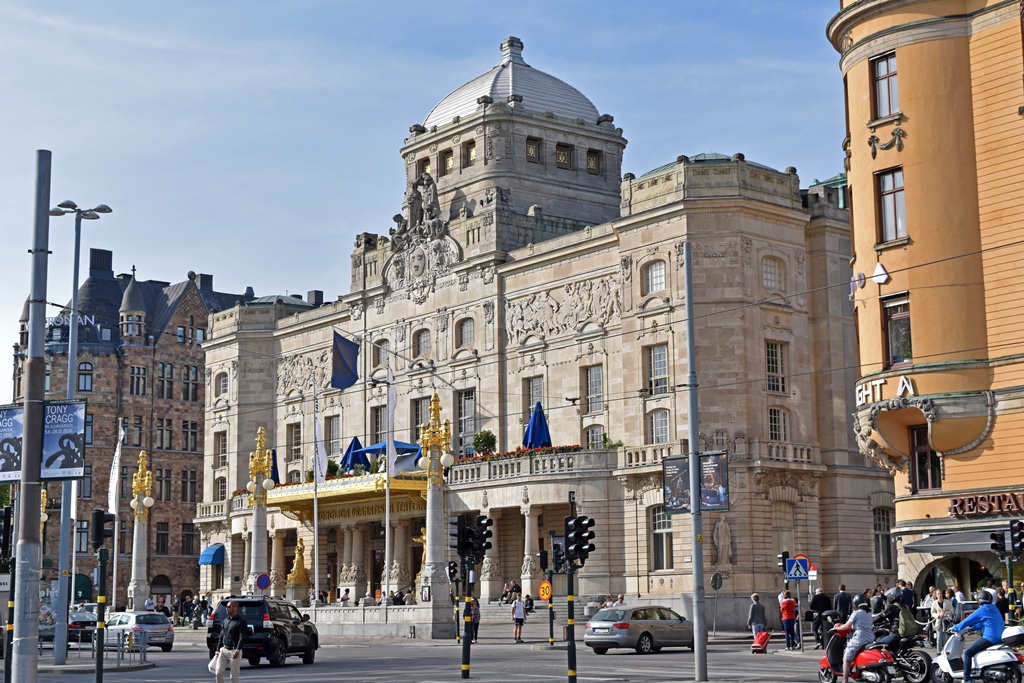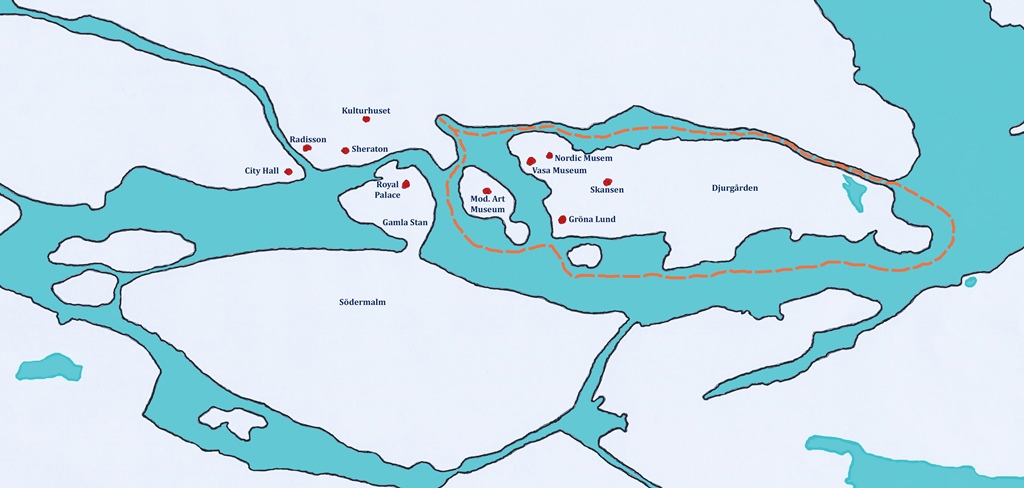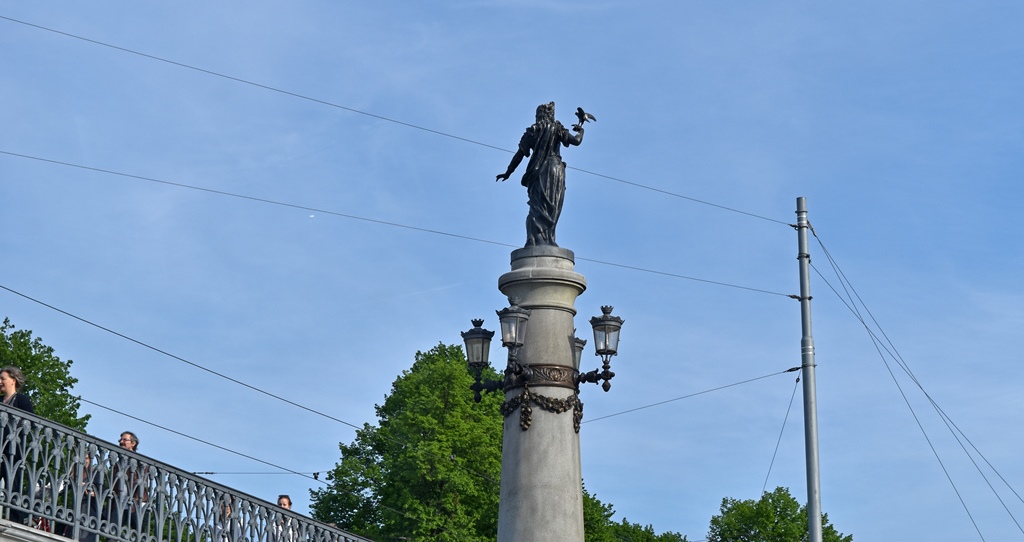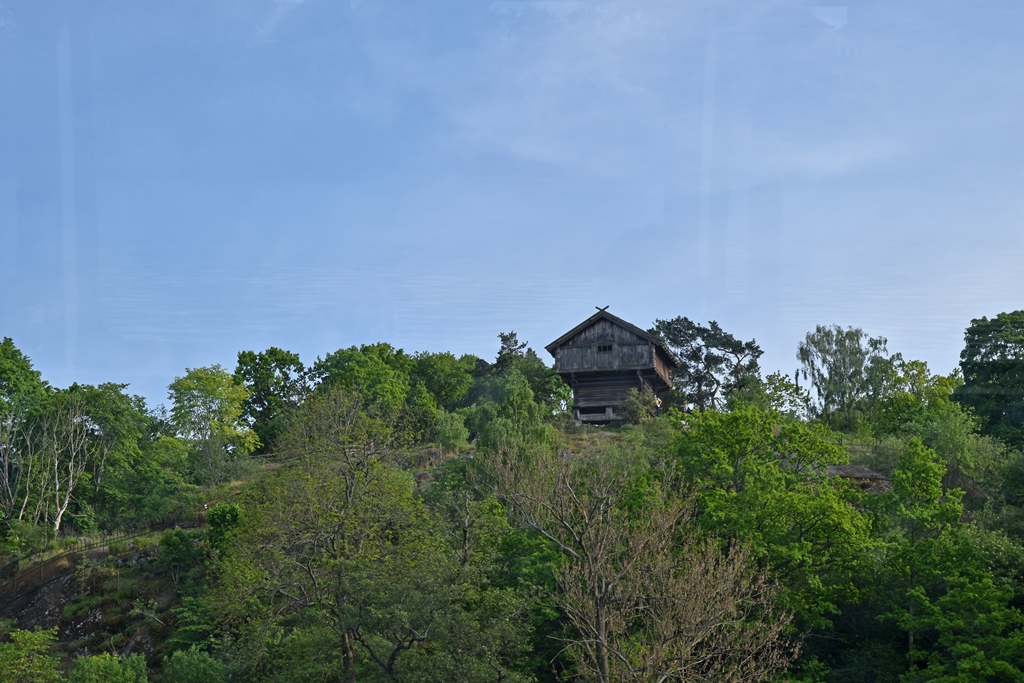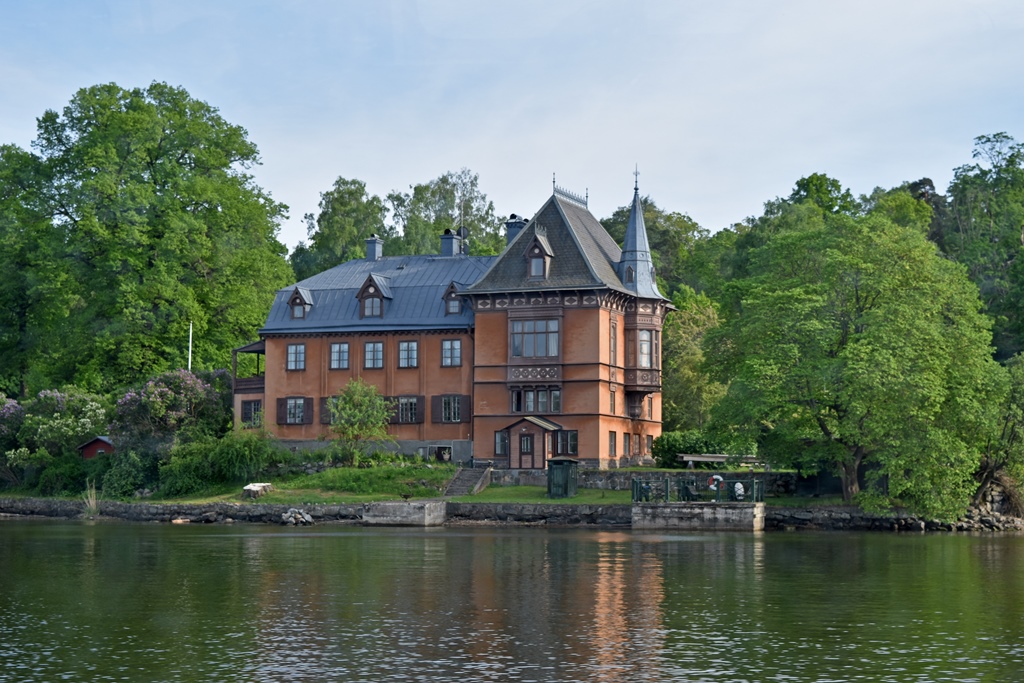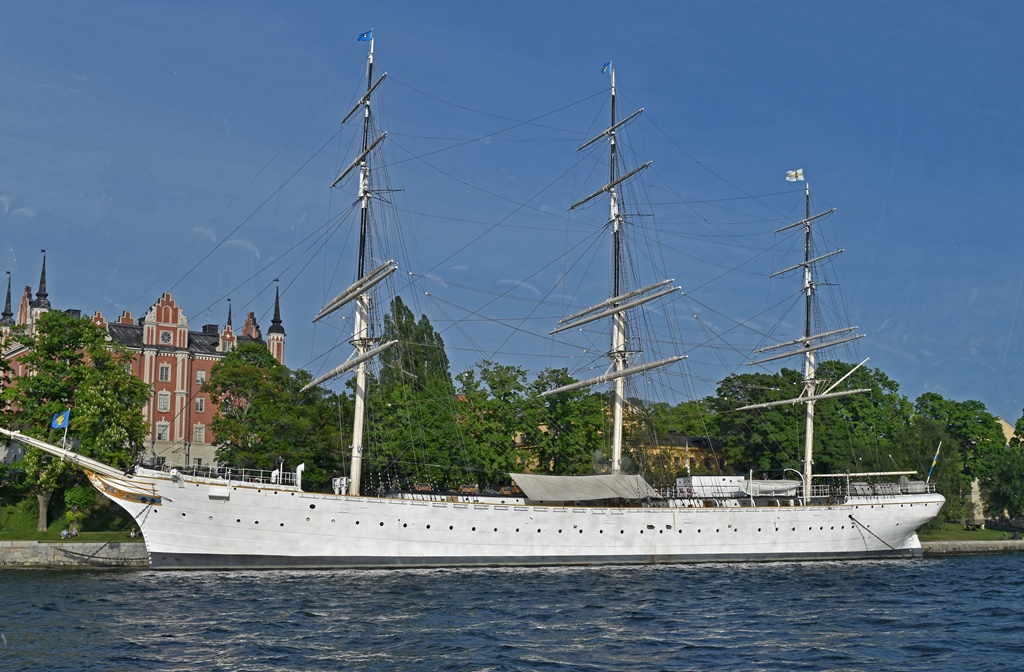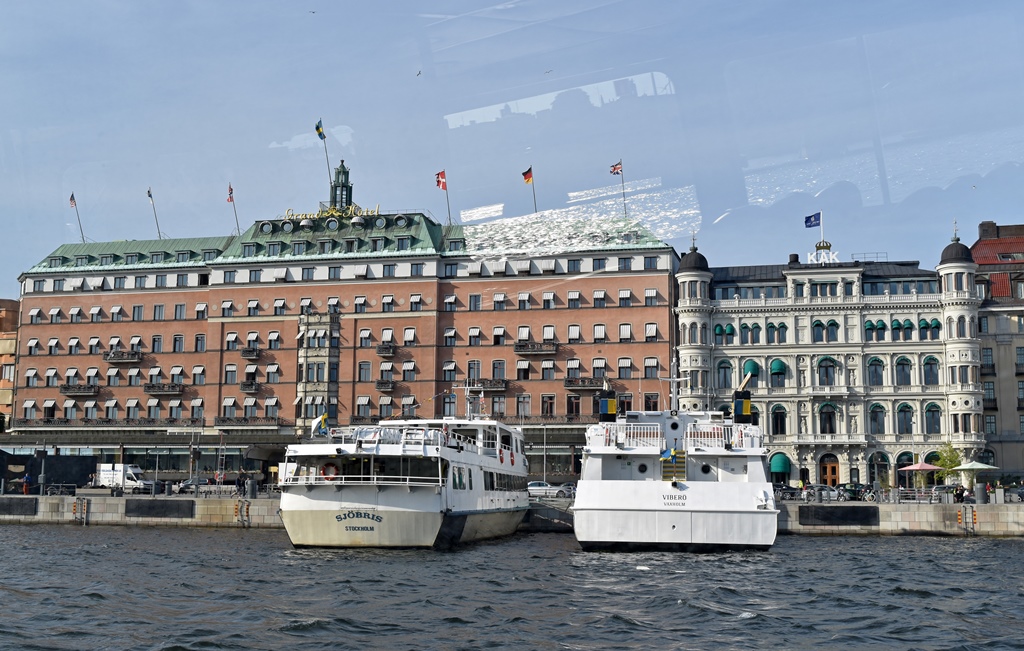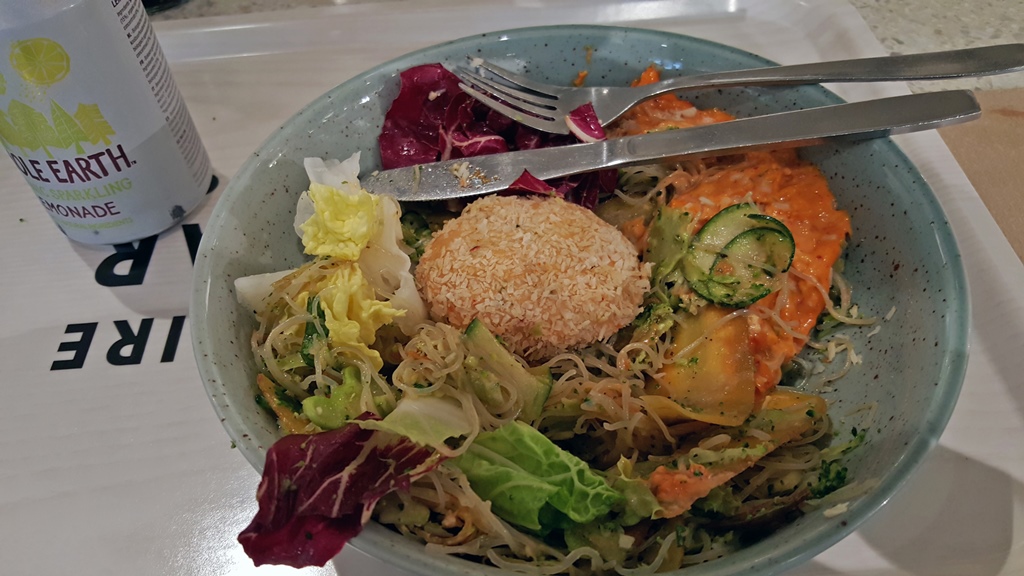Having finished our visit to the Nordic Museum, we were looking for a tour boat to occupy the
rest of our day in Stockholm. The harbor tour boats in Stockholm generally look something
like this:
A Tour Boat
The boats need to be kept fairly low to the water, so they can fit under the bridges which
connect the harbor’s islands to each other and to the mainland. One such bridge is called
Djurgårdsbron. It connects the island of Djurgården to the mainland.
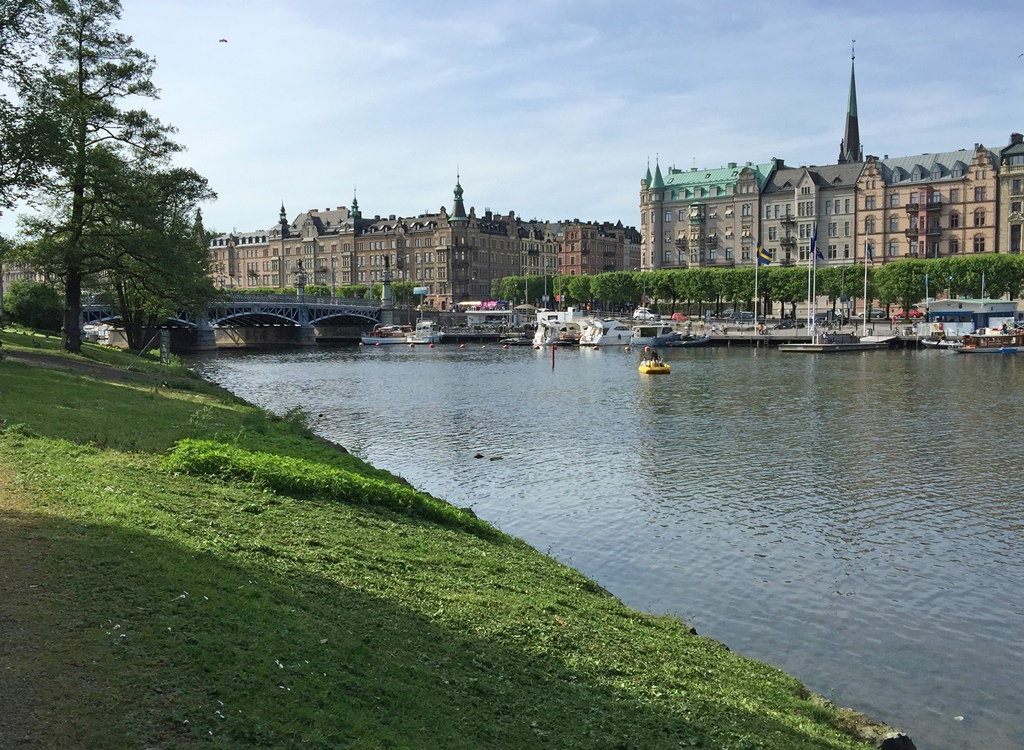
Djurgårdsbron Bridge from Djurgården Island
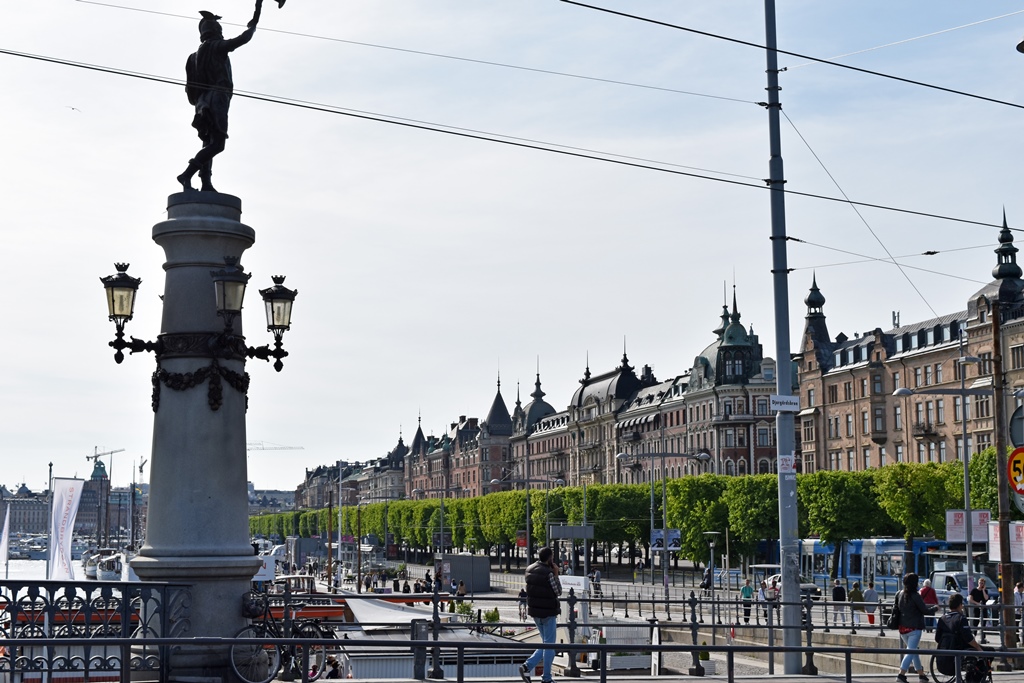
Strandvägen from Djurgårdsbron Bridge
Though we’d seen some of the tour boats floating around in the harbor, we weren’t sure
exactly where they came from. But being reasonably intelligent, we strongly suspected them
of coming from somewhere along the waterfront. From the Djurgårdsbron, we had a fairly
good view of the waterfront to the west, and though there were many tied-up boats in sight,
none of them were obvious tour boats. But clinging to our understanding of boat behavior, we
headed off to the west, following the waterfront street called Strandvägen. Along the
way, we saw many boats, but most were pretty small. They appeared to be things like
privately-owned pleasure boats or water taxis. Nothing like tour boats, nor did we see any
kiosks selling tickets for boat tours. But on the landward side of the street, at least there
were some interesting-looking buildings.
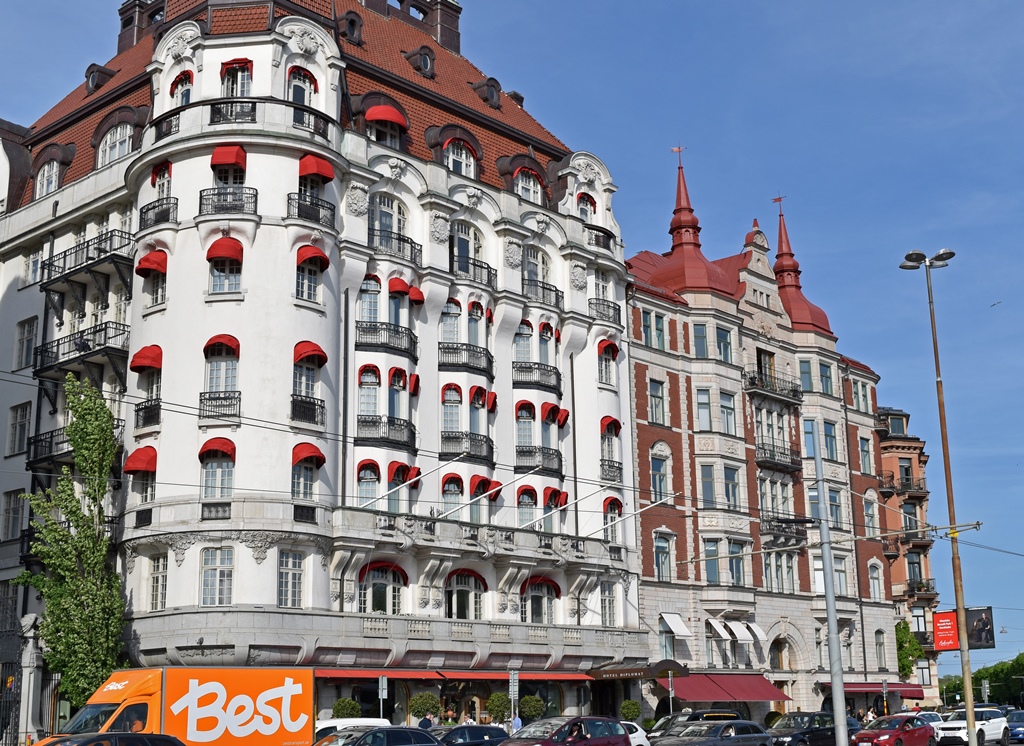
Hotel Diplomat
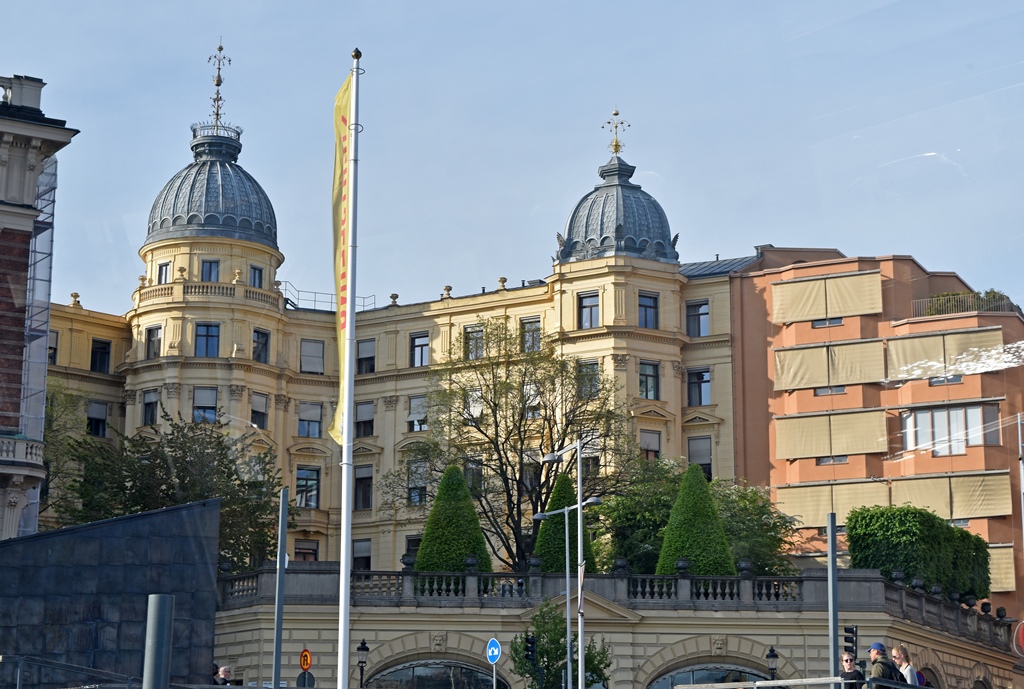
Handelsbanken Building
Royal Dramatic Theater
Finally, after more than a mile of walking, we found ourselves running out of waterfront, due
to the odd shape of the shoreline. But as the waterfront was ending, we found a
prominently-labelled ticket office for boat tours. The posted tour route looked like it would
probably be interesting, going well beyond the territory we’d already explored. The route
essentially circled a few islands, mainly the one called Djurgården, which we’d already
seen to some extent while visiting the Vasa and Nordic Museums. However, this island is quite
large (more than two miles long), with these museums (and others, including a museum devoted
to the musical group ABBA) inhabiting its far western end. The rest of the island was unknown
territory for us. Also, we’d been walking around a lot, and we were more than ready to rest
our feet while being conveyed around the harbor for an hour or so.
Tour Route
After buying our tickets, claiming seats in the enclosed boat, and figuring out the multilingual
headsets, we settled in as the tour began. The first leg followed Strandvägen back to the
Djurgårdsbron bridge, exactly retracing the mile we’d just walked. But along the way, the
headsets told us some interesting stuff about some of the buildings.
Statue on Djurgårdsbron
After passing under the bridge, we continued along the north shore of Djurgården, which
quickly took on a grassy, tree-covered parklike character. Mostly hidden up in the trees, we
knew there was an attraction called Skansen, which is an outdoor museum devoted to reproducing
rural Sweden, before the industrial era. You’ll see more on Skansen in the next page.
Skansen Structure(?)
Continuing along the north shore of Djurgården, we noticed an interesting building, which is
known as Sirishov. This building is a villa which evolved (via add-ons and renovations)
from a structure first built in the 1760’s. It’s undergone many ownership changes since then,
and was once owned by Gustav III’s Lord Chamberlain, a man named Sten Abraham Piper. Piper is
said to have named the building after his favorite dog, who was named Siri. One of the later
owners was born in the building and was named for the building (and transitively for the dog),
being called Siri Eleonora Wallenberg.
Sirishov
The passage soon narrowed to a canal (called Djurgårdsbrunnskanalen), which eventually
opened up into a large open area of water called Isbladsviken, at the east end of the
island. Emerging from behind the island, we could see what appeared to be a sculpture with
gushing water, across from the island, in a neighborhood called Nacka Stand. This
sculpture is known as “God Our Father on the Rainbow”. It was conceived as a tribute to the
United Nations by a Swedish sculptor named Carl Milles, who for technical and bureaucratic
reasons was unable to get the sculpture installed in New York before his death in 1955.
Four decades later, an American pupil of Milles, named Marshall Fredericks, was able to get
approval from Stockholm to install the sculpture in its present location, which was
accomplished in 1995.
God Our Father on the Rainbow and Djurgården Island
Over on the south shore of Djurgården, there were more houses than we’d seen on the
north shore. With the southern exposure providing more sunlight, the location must have
been in demand among the Swedish well-to-do of the 19th Century – some of the houses were
palatial in scale. These days, some are used as promotional locations for corporations,
some are available for rent (if you can afford it!), and some are undoubtedly used as
primary or seasonal residences. Some of them have names.
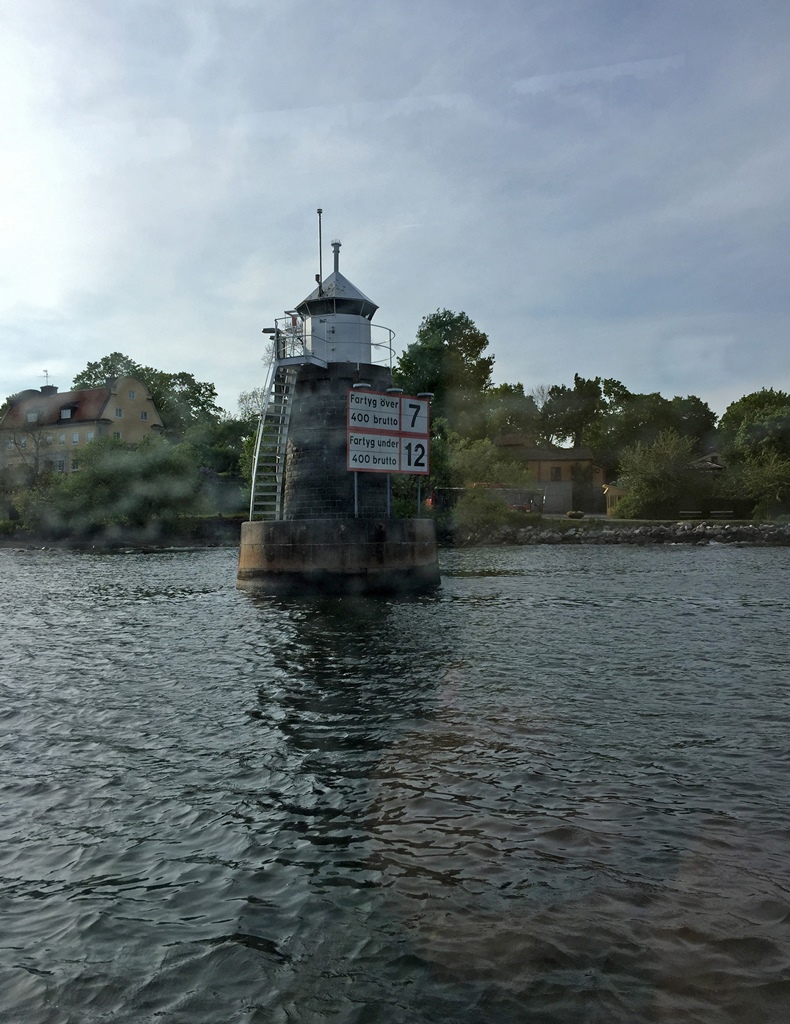
Channel Marker
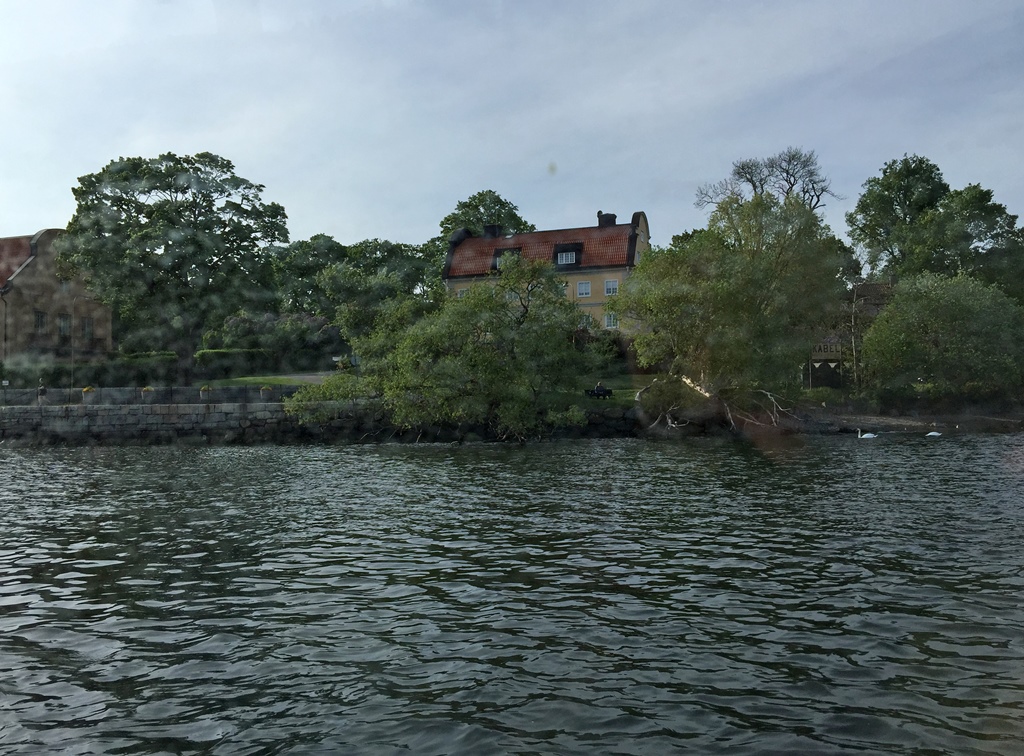
Djurgården Island
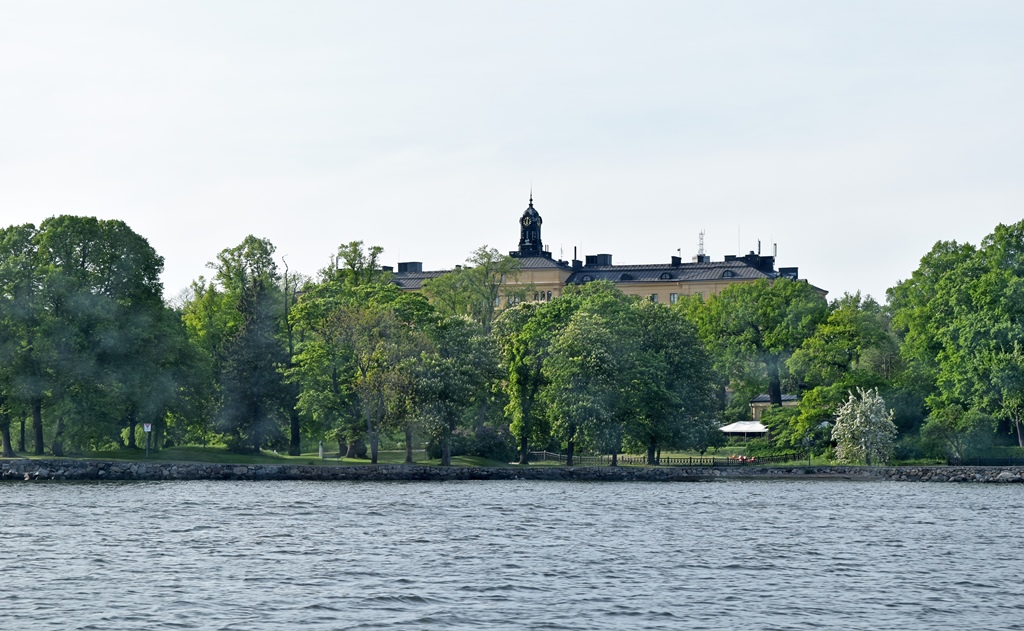
Building on Djurgården Island
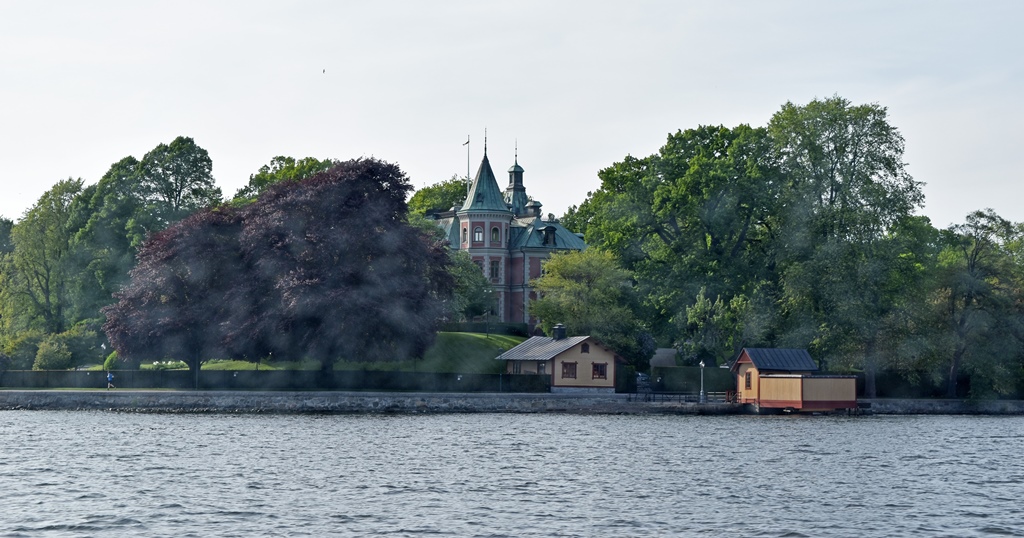
Täcka Udden, Djurgården Island
Looking again across the water, we could see a massive brown building with a green roof
and many windows, and could only think that it had to be a hotel or a palace of some kind.
This turned out to be the Danvikshem Retirement Home, built between 1912 and 1915. The
roots of the home go all the way back to a hospital established in 1551 by Gustav Vasa in
nearby Danviken.
Danvikshem Retirement Home
Back over on Djurgården, we were passing an area called Waldemarsudde, an area
known for historic buildings (there is also a marina). The most famous of these buildings is
called Waldemarsuddes Oljekvarn, or Waldemarsudde’s Oil Mill, a 1784 windmill that was
used to produce linseed oil from flax seeds. At one time there was a second windmill which
was used to saw lumber, but it burned down in 1849. The oil mill no longer has its “wings”,
but during a 1961 renovation, its interior parts were restored to working order. Prince
Eugene (1865-1947) was an accomplished painter, and produced a number of paintings that
feature the oil mill. Near the mill there are some other buildings which were occupied by
Prince Eugene that were bequeathed, along with his art collection, to the City of Stockholm
on his death, and all of this now forms a museum named for the prince.
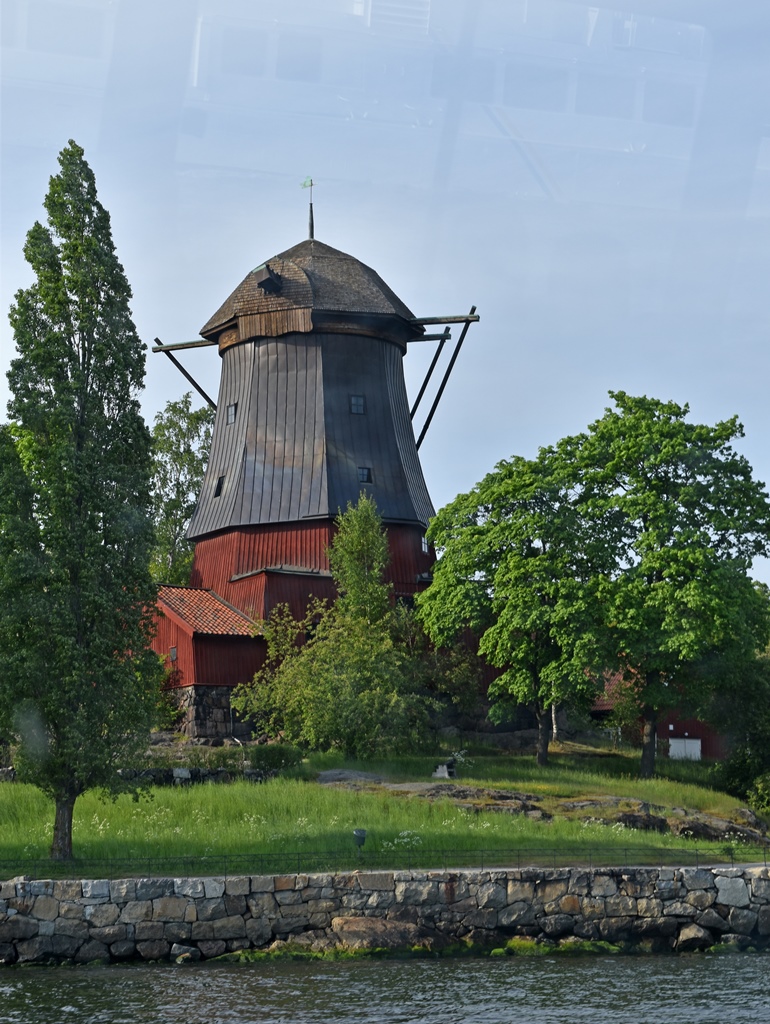
Waldemarsuddes Oljekvarn
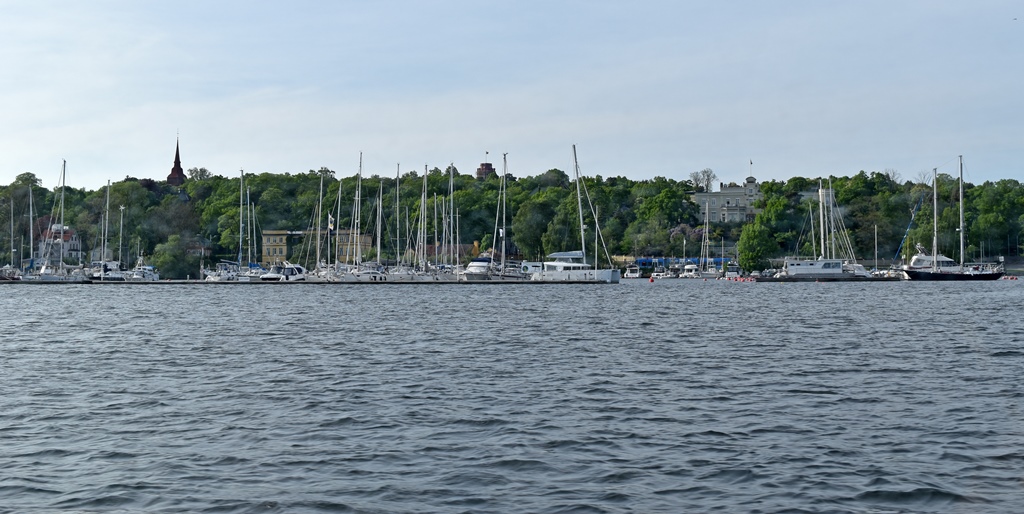
Waldemarsudde Marina
Back across the water, there’s a really long wharf where cruise ships can tie up. This is
the Stockholm Cruise Ship Terminal, known as Stadsgården. The western portion of this
wharf has been used for mooring ships since the 14th Century, no doubt because of its proximity
to Gamla Stan. But with more traffic and bigger ships, the wharf has extended to its present
length of about one mile.
Viking Cinderella Cruise Ship and Ersta Sjukhus Hospital
Returning to our right, we came across a small island just offshore from Djurgården,
which looked more industrial than scenic. This island is called Beckholmen, and it has
served Stockholm’s shipping industry for many years. Back in 1633, when ships were made of
wood, a pitch production facility (pitch comes from boiled tar, and is used for sealing wooden
vessels) was set up on the island. When Sweden lost Finland in 1809, they also lost the main
source of their tar, so Beckholmen ended up switching over to being a shipyard (needed more
anyway, because of the advent of steam power), with two drydocks. The Swedish Navy acquired
the island in the 20th Century and added another drydock in 1923-25. In 2007, the Navy turned
over control of the island to the administrators of Djurgården, and Beckholmen is being
operated as a combination of a commercial shipyard and an historical monument.
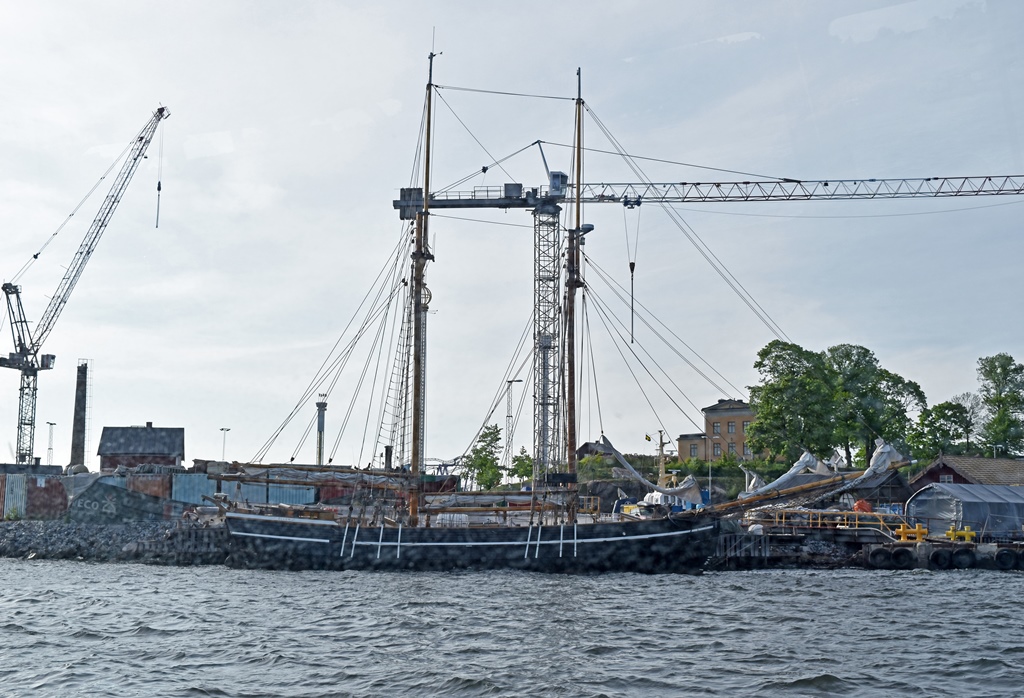
Tall Ship, Beckholmen Island
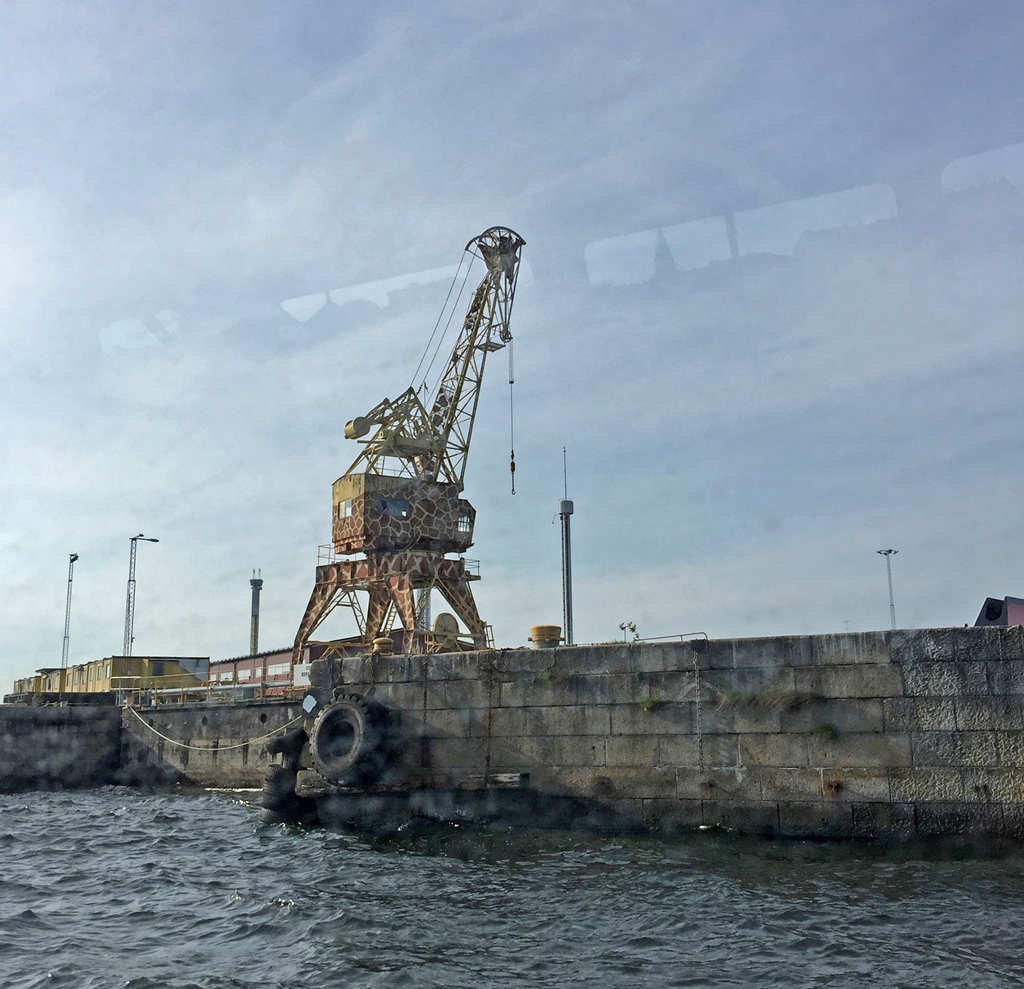
Giraffe Crane, Beckholmen Island
Just past Beckholmen, we reached the southwestern corner of Djurgården, and what looked like
an amusement park. This was Gröna Lund (“Green Grove”), an amusement park which has
operated here since 1883, making it Sweden’s oldest amusement park. At 9.4 acres, it’s not
very big for an amusement park, but it has more than 30 attractions and is a popular concert
venue in the summer. Artists that have performed at Gröna Lund include Bob Marley,
Jimi Hendrix, ABBA (of course), Deep Purple, Sting, Nas and “Weird Al” Yankovic.
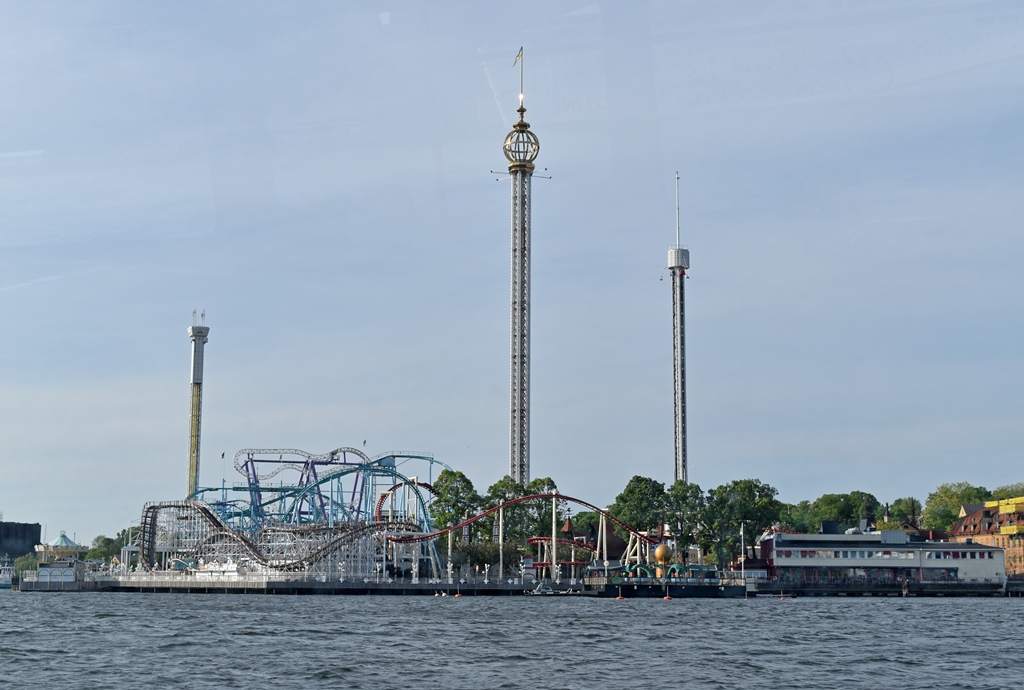
Gröna Lund Amusement Park

Gröna Lund Amusement Park
After passing Gröna Lund, there was an open channel to our right which followed
Djurgården’s western shoreline, and we could see up to the Vasa Museum, but we didn’t go
that way. We had a couple more islands to sail around first. The first was a tiny island
called Kastellholmen, which has a few buildings, a skate pavilion and a castle-looking
building called the Kastellet. Kastellet was originally built as a defensive
fortification, but now has office and conference room facilities. It still has some cannons,
though. Tied up at the island is a brig called the Tre Kronor af Stockholm, a tall
ship built as a replica between 1997 and 2005. The ship has many owners, the largest of
which is the Briggen Tre Kronor AB association, with 4,000 members. The Tre Kronor’s
permanent mooring place is at Kastelholmen, but it occasionally leaves to participate in tall
ship festivals and races around the Baltic Sea area, where it performs well.
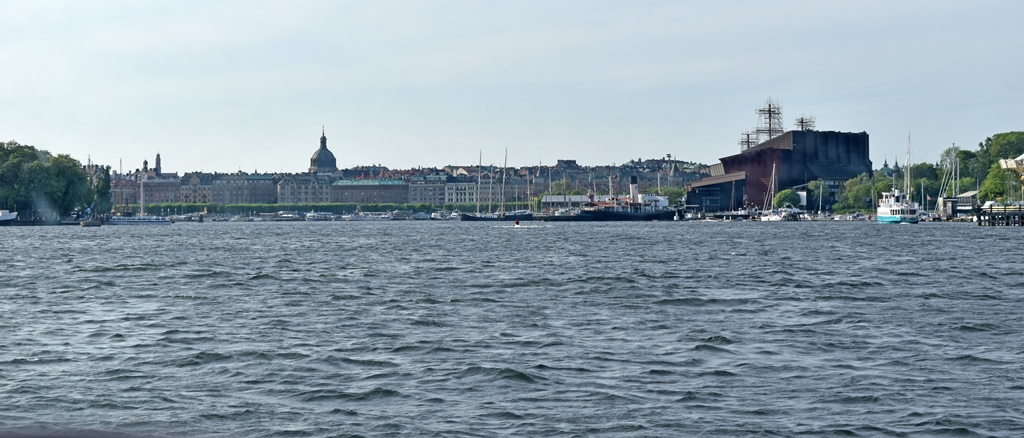
Open Water with Vasa Museum (right)
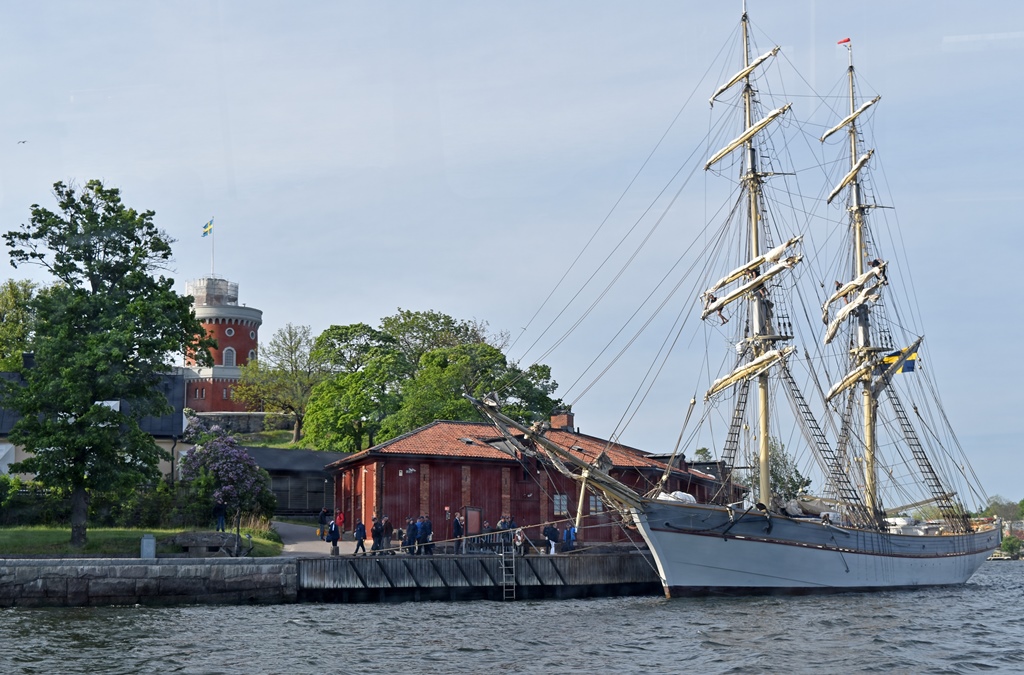
Kastellholmen Island with Briggen Tre Kronor
Turning right after passing Kastellholmen, we found ourselves between the island and the Gamla
Stan waterfront, on our left.
Gamla Stan Waterfront
Back on our right, we next passed an island called Skeppsholmen. Skeppsholmen
is larger than Kastellholmen, and is connected to it by a bridge. In the past, Skeppsholmen
has been home to several military buildings, due to its strategic location, but these days,
museums are more common, including the Museum of Modern Art (to appear in a future page). The
island hosts the Stockholm Jazz Festival each year, and boasts a tall ship of its own. This
ship is called the af Chapman, and is used as a youth hostel.
STF Af Chapman and Skeppsholmen Island
We turned right after passing Skeppsholmen and then took a quick left, at which point we
noticed the Grand Hotel. Which meant that we were back at the point from which our cruise
had started, and it was time to get off.
Grand Hotel and Bolinder Palace
By this time, we were ready for an early dinner, and thought we’d try something different.
Earlier, we’d walked through a department store and noticed that they actually served food at a
small cafeteria sort of thing. We were near the store, so we went back and ordered food. I
ordered a dinner salad, and found it to be not much to write home about. So naturally, I’m
writing about it.
Dinner Salad
We returned to our hotel, pretty worn out by our long day. But we were looking forward to
wearing ourselves out again, by returning to Djurgården and visiting its largest attraction,
the open-air museum called Skansen.

